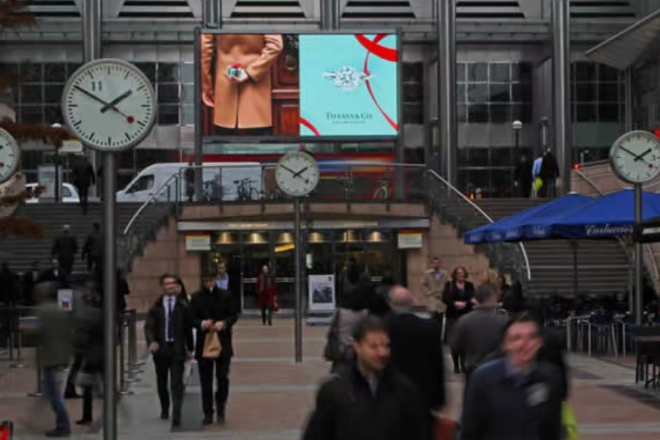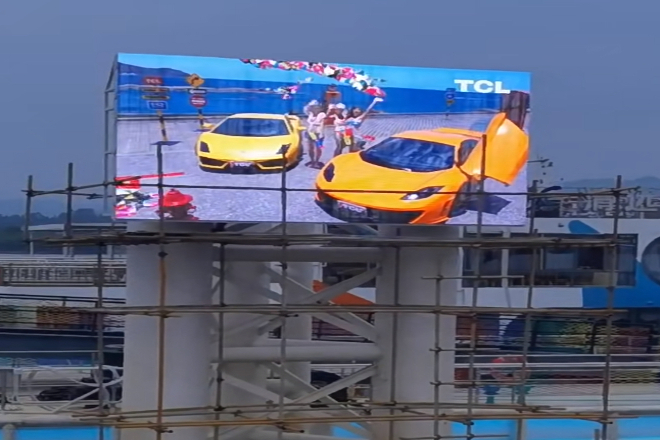Introduction
The cruise terminal is a lively and busy place. Tourists drag their luggage and look for the boarding gate eagerly. The staff are busy guiding and coordinating.
In this information-intensive scene, traditional broadcasting and signboards have become incapable. So, can Affichage LED become a “magic weapon” to improve tourist experience and operational efficiency?
Table des matières
1. What is the demand for information dissemination at the cruise terminal?

The cruise terminal is a lively and complex place. Information dissemination is so important! Imagine that tourists come to the terminal with large and small bags. If the information is not timely and clear, how anxious they will be.
1). The importance of real-time information
1.1). Ship dynamics:
When the cruise ship arrives, when it leaves, and how the voyage is, these information must be quickly told to tourists and staff. Tourists can arrange time and not miss the ship.
Staff can also prepare in advance, such as arranging shuttle buses and preparing boarding procedures.
1.2). Weather and safety information:
The terminal is close to the sea, and the weather changes at any time. If there are strong winds or heavy rain, it will be dangerous for tourists to board the ship.
Timely weather warnings and safety tips can help tourists prepare in advance, such as wearing life jackets and paying attention to not slipping.
1.3). Boarding process and instructions:
When tourists arrive at the dock, it is like entering a maze, with people and luggage everywhere.
At this time, there must be clear instructions to tell them where the boarding gate is, how to check in luggage, and what to prepare for security checks. Otherwise, everyone will be in a mess and the efficiency will be too low.
2). Limitations of traditional information dissemination methods
However, traditional communication methods are really a bit “powerless.”
2.1). Broadcasting system:
With people coming and going on the dock and machines roaring, the sound of the broadcast can easily be drowned out. Moreover, the broadcast can only “speak” but not “see,” and much complex information can’t be understood by listening alone.
2.2). Static signs:
The information on these signs is updated too slowly. The arrival time of the cruise ship has changed, and the weather has changed, but the signs still show old information. Isn’t this misleading?
2.3). Manual guidance:
Although the staff is enthusiastic, there are too many tourists, and they are too busy. Moreover, sometimes, the information transmission is wrong, such as telling tourists that the boarding gate is on the left, but it is on the right.
2. Application scenarios of LED display screens in cruise terminals
1). Information display in the waiting hall
1.1). Ship LED information screen:
In the waiting hall, the LED display screen can display the dynamic information of the cruise ship in real-time, such as the ship name, estimated arrival time, and the location of the boarding gate.
In this way, tourists can quickly find their cruise ship without wandering around in the hall. This screen can not only provide text information but also make the information more intuitive and easy to understand through dynamic display and graphical interface.
For example, in Shanghai Wusongkou International Cruise Port, the LED display screen has played such a role, allowing tourists to find the cruise ship they want to take at a glance.
1.2). Weather and safety reminder screen:
Display real-time weather conditions, safety instructions and emergency evacuation routes. This screen can enhance tourists’ sense of security and make them feel at ease while waiting to board the ship.
Especially in bad weather conditions, timely weather warnings and safety tips can effectively avoid safety accidents.
1.3). Entertainment and promotional screen:
Play cruise promotional videos, travel route introductions, onboard activity previews, etc. Through these contents, tourists’ expectations for cruise travel can be enhanced, allowing them to experience the fun of travel in advance.
This screen can also display some interactive content, such as tourists can check their itinerary arrangements on the cruise on the screen.
2). Guidance and service at the boarding gate
2.1). Boarding gate LED display:
At the boarding gate, the LED display can display information such as boarding time, boarding order, cabin number, etc. This can effectively avoid confusion among tourists and make the boarding process more orderly.
The screen can also display some animations or graphic prompts to help tourists understand the boarding process more intuitively.
2.2). Luggage check-in LED information screen:
Inform tourists of the process, precautions and luggage storage location of luggage check-in. In this way, the efficiency of luggage check-in can be improved and the waiting time of tourists can be reduced.
The screen can update the status of luggage check-in in real-time, allowing tourists to know their luggage at any time.
Information dissemination in commercial areas
2.3). Advertising LED screen:
In the commercial area of the terminal, the LED display screen can display promotional activities and preferential information about commercial facilities around the terminal (such as duty-free shops, restaurants, cafes, etc.).
This not only attracts tourists to consume but also brings more customers to the merchants. The screen can play dynamic advertisements to attract tourists’ attention and increase the exposure of advertisements.
2.4). Brand promotion LED screen:
Play the brand advertisements of the cruise company to enhance the brand image and enhance tourists’ awareness of the cruise brand. By playing high-quality brand promotion videos, tourists’ trust and goodwill in the brand can be increased.
3. LED display screen improves the experience and operation efficiency of tourists at the terminal

1). Improve the experience of tourists
1.1). Vivid and intuitive information display
The LED display screen presents dynamic information, weather conditions, safety tips, and other information about the cruise ship to tourists in a vivid and intuitive form through a high-definition and high-luminosité picture display.
For example, the 8015㎡ LED transparent display screen at the Shanghai Wusongkou International Cruise Port not only provides a clear information display but also makes the overall visual light of the building through transparent imaging technology.
This display method not only enhances tourists’ cognition of information but also improves their visual enjoyment.
1.2). Enhance interactive experience
Most modern LED displays are equipped with touch functions, and tourists can check the ship’s activity arrangements, restaurant menus and other information by touching the screen.
This interactivity not only increases tourists’ sense of participation but also improves their satisfaction and pleasure during cruise travel.
For example, the somatosensory interactive LED display allows users to interact directly with the screen by recognizing human movements and gestures, enhancing users’ sense of participation and immersion.
1.3). Enhance brand image
High-quality LED displays can significantly enhance the brand image of cruise ships by playing brand advertisements and travel information.
For example, the SMD small-pitch LED display installed at the Tourism Distribution Center of Songgu Wharf in Xiamen, China, restores the true colors of tourist attractions with ultra-high-definition and true color display effects, and enhances tourists’ cognition of Xiamen’s tourism resources.
2). Improve operational efficiency
2.1). Real-time information update
LED displays can update information in real-time to ensure that tourists get the latest travel information and discounts. This real-time nature not only improves the efficiency of information transmission but also reduces the waiting time and confusion of tourists at the dock.
2.2). Efficient information dissemination
LED display screens attract tourists’ attention through high-definition and dynamic images, increasing the exposure of advertisements.
For example, the high-performance LED display screens installed in Qingdao Port have achieved all-round monitoring of important port facilities, greatly improving the efficiency of logistics transportation and the operating benefits of the port.
2.3). Intelligent monitoring and management
LED display screens can also be used as display screens for monitoring systems, displaying real-time monitoring information such as ship status, energy consumption, and environmental conditions.
This intelligent monitoring system not only improves operational efficiency, but also enhances the safety of the dock.
4. Challenges that may be faced when installing LED display screens at docks
Installing LED display screens at docks sounds like a good idea, which can not only improve the tourist experience, but also improve operational efficiency.
But during the actual operation, there are really many headaches. These problems are mainly concentrated on cost, technology, environment, etc. Let’s talk about them.
1). Cost and budget issues
Let’s talk about money first. Installing LED display screens requires a lot of money at the beginning. This money is mainly spent on buying screens, installing them, and debugging them.
Let’s talk about buying a screen. There are many kinds of LED display screens on the market now, and the prices are quite different. If you choose a high-end Micro/Mini LED display screen, the price is not low.
Although the technology is good, your wallet will suffer. Installation and debugging cannot be sloppy. You have to find a professional technician to do it. Otherwise, the screen will not be installed well, and there will be more trouble in the later stage.
Add up all this money, and you have to calculate the budget carefully. Otherwise, it is easy to overspend.
Later, there are long-term maintenance costs. The screen is not a one-time solution after buying it. It is inevitable that problems will occur after a long time of use, such as broken pixels and aging lines, which all need to be repaired.
Moreover, the technology is updated quickly, and you may have to upgrade the system and replace parts in a few years, which is another expense.
Although LED display screens are more energy-saving than old ones, if you use them more, the electricity bill must be taken into account.
If you can choose an energy-saving screen, such as one that can automatically dim, you can save a lot of electricity bills in the long run, which is also a good way.
2). Technology and compatibility issues
Technology is also very puzzling. The terminal already has many information systems, such as ticketing systems, broadcasting systems, monitoring systems, etc. The newly installed LED display screen must “coexist peacefully” with these systems.
Otherwise, it will be a mess. For example, the ticketing system must be able to transmit boarding information to the display screen in a timely manner. If the communication protocol does not match, it will be troublesome.
Therefore, when designing, you have to think clearly about the “communication” problems between these systems, and you may have to upgrade the old system to allow the new screen to be successfully connected.
In addition, technology updates too fast. Now, the resolution, refresh rate, color performance, etc., of LED display screens are constantly improving. If the screen you buy is outdated in a few years, it will be too uneconomical.
Therefore, when buying a product, you have to choose a product that is a bit forward-looking in terms of technology.
Moreover, you have to maintain a good relationship with the supplier so that you can get timely support when the technology is upgraded.
You should also pay more attention to industry trends and plan the upgrade route of the screen in advance so as not to be eliminated by technology.
3). Environmental adaptability issues
Environmental issues cannot be ignored. The wharf is close to the sea, the air is humid, and there is salt spray, which is a big test for the weather resistance of the screen. If the screen is not waterproof and moisture-proof, it will break down soon.
Therefore, when choosing a screen, you have to choose one that meets the IP protection level requirements, such as IP54 or higher, so as to prevent water vapor and dust from getting in.
In terms of materials, you must also choose corrosion-resistant metals, and the surface must have a protective coating so that it can withstand the harsh environment of the seaside.
Then there is durability. The screens at the wharf have to be used for a long time and frequently, and people coming and going will inevitably touch the screens.
Therefore, the screen’s lamp beads, circuits and other components must be able to withstand long-term high-load work, and the shell must be strong and earthquake-resistant so that it can operate stably in a complex environment.
In short, although there are many benefits to installing LED displays at the wharf, these challenges in the process should not be underestimated.
To get this done, you have to plan well in terms of budget, technology and environment and choose the right products so that the screen can truly play its advantages, bring a better experience to tourists, and make the operation of the wharf more efficient.
5. Solutions and implementation suggestions for LED display screens at the wharf

Installing LED display screens is a good thing, but you have to pay attention to the method, otherwise it is easy to get half the result with twice the effort.
Let’s talk about how to solve the problems mentioned above and make the display screens “take office” smoothly at the wharf.
1). Cost optimization plan
1.1). Phased implementation:
The wharf is so large that it is definitely too much for the wallet to install LED display screens all at once. Therefore, it must be installed in stages according to the wharf’s actual needs and budget.
First, choose those key places, such as the waiting hall and the boarding gate, which are places that tourists must pass through, and install them here first, and then slowly expand to other areas later.
This can ensure that tourists in key areas can enjoy convenience without blowing up the budget all at once.
1.2). Choose cost-effective products:
There are many kinds of LED display screens on the market, and the prices are quite different. At this time, you have to do your homework and investigate the market carefully.
Find those screens with reliable performance and reasonable prices so that you can not only guarantee quality but also reduce the initial investment cost. Don’t just buy them because the price is cheap.
If the quality is not good, the later maintenance cost will be higher, which is not worth the loss.
2). Technical support measures
2.1). System integration plan:
As mentioned earlier, there are a lot of information systems in the terminal, and the newly installed LED display screen must work well with them.
This requires a detailed system integration plan to clearly plan how to connect the display screen with the existing information system and how to share information.
In this way, the display screen can be smoothly connected to the terminal’s large system to achieve collaborative work, and there will be no “separate management” situation.
2.2). Technical support and training:
Technology is not something that you can explore yourself. You have to cooperate with suppliers and let them provide technical support and operation training.
Let the terminal staff be proficient in using the display screen and master some basic maintenance knowledge.
In this way, you can solve small problems by yourself without having to wait for the supplier to repair them every time, which saves time and cost.
3). Environmental adaptability measures
3.1). Protection design:
The terminal is close to the sea, and the environment is harsh, so the screen must be protected by “armor.” Protective devices such as waterproof covers and crash barriers can be set around the display screen.
The waterproof cover can prevent rain and waves from splashing onto the screen, and the crash barrier can prevent tourists from accidentally hitting the screen. In this way, the weather resistance and durability of the screen can be greatly improved.
3.2). Maintenance régulière:
After installing the screen, you can’t just ignore it. You have to make a regular maintenance plan, check the condition of the screen regularly, find and solve small problems in time, and prevent the problem from expanding.
This will not only ensure that the screen always works properly but also extend its service life. In the long run, it can also save a lot of money on repairs and replacements.
In short, installing LED screens is a systematic project. You have to start from cost, technology, and environment to find a suitable solution.
As long as these things are considered carefully, the LED screen can play a good role in the terminal, bring a better experience to tourists, and make the terminal operation a step further.
6. Conclusion
In general, the application of LED screens in cruise terminals can not only enhance the experience of tourists, but also significantly improve operational efficiency.
Although there are some challenges in installation and maintenance, these are not a problem as long as reasonable planning and selection of appropriate equipment are made.
Enfin, si vous souhaitez en savoir plus sur les écrans LED, veuillez nous contacter.
